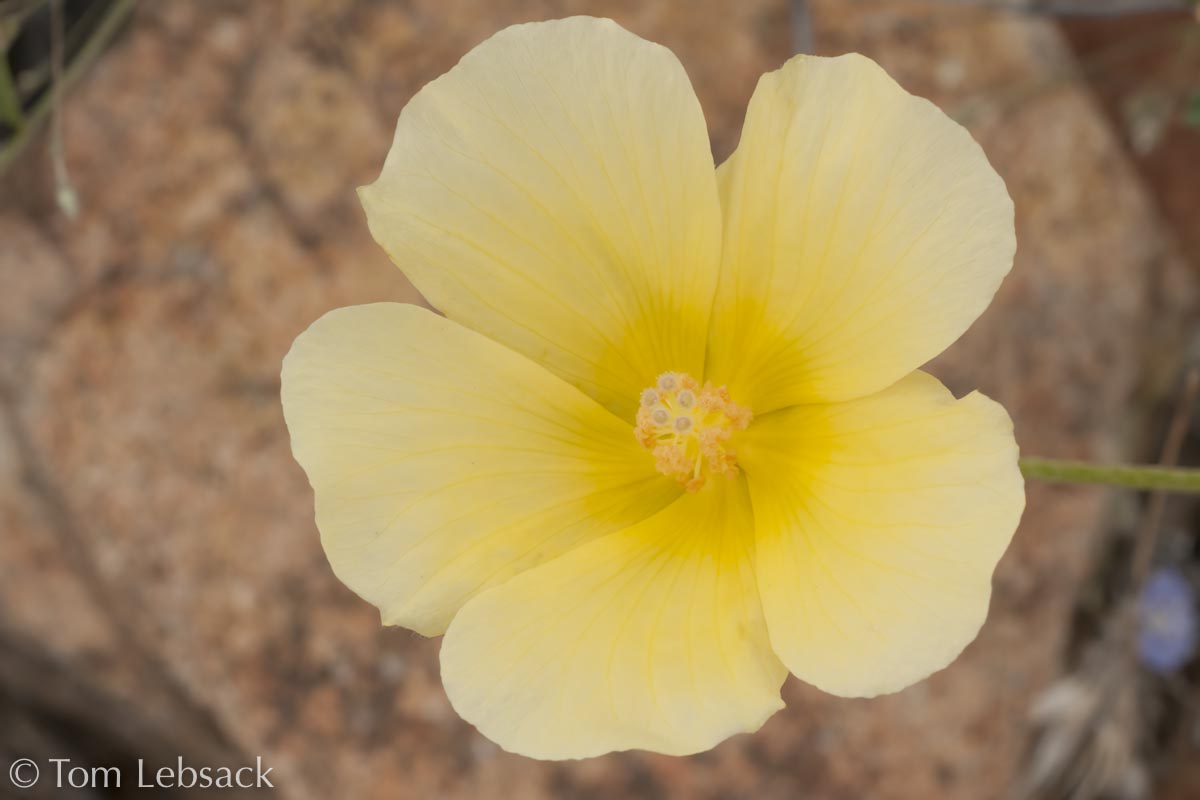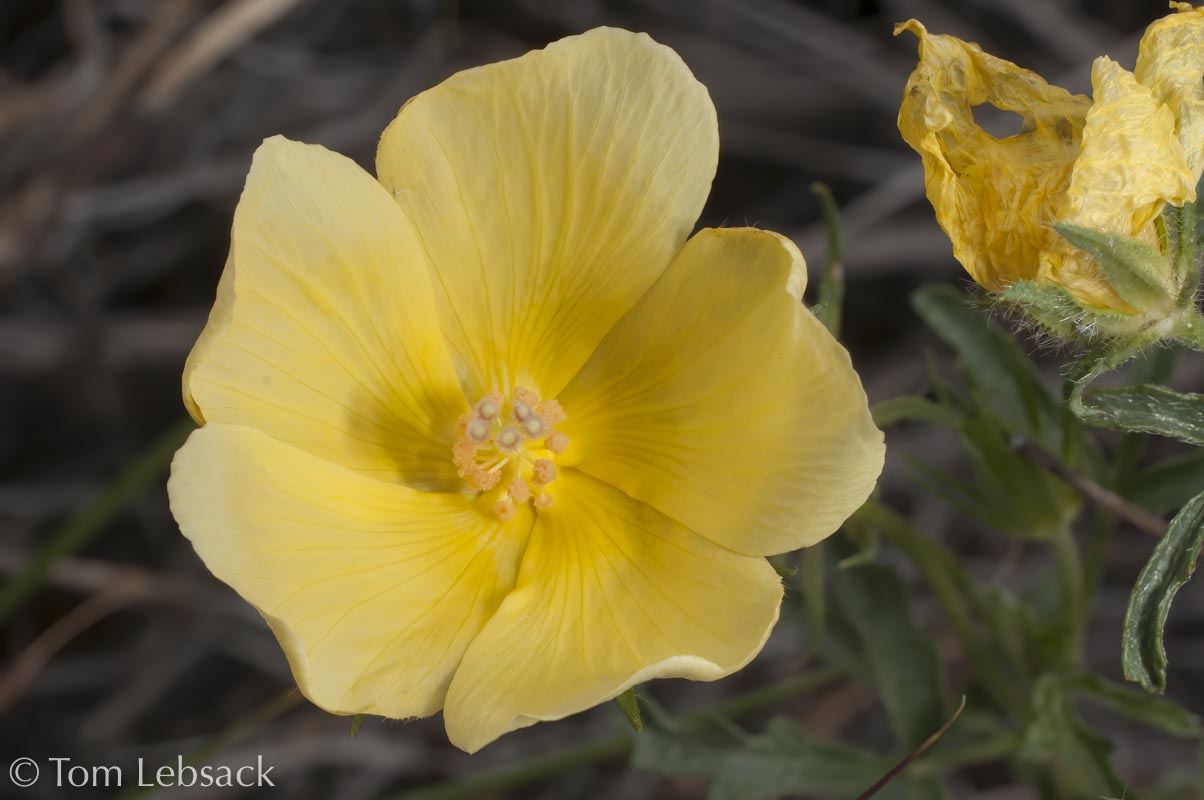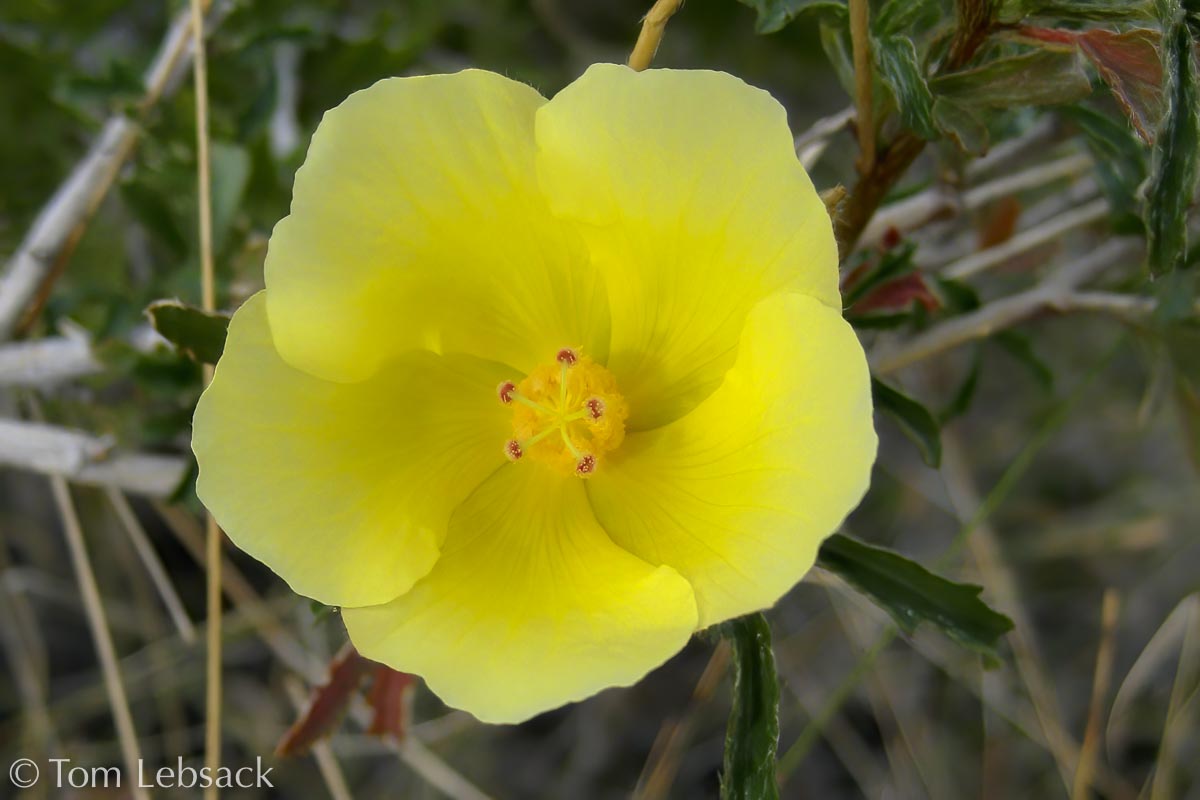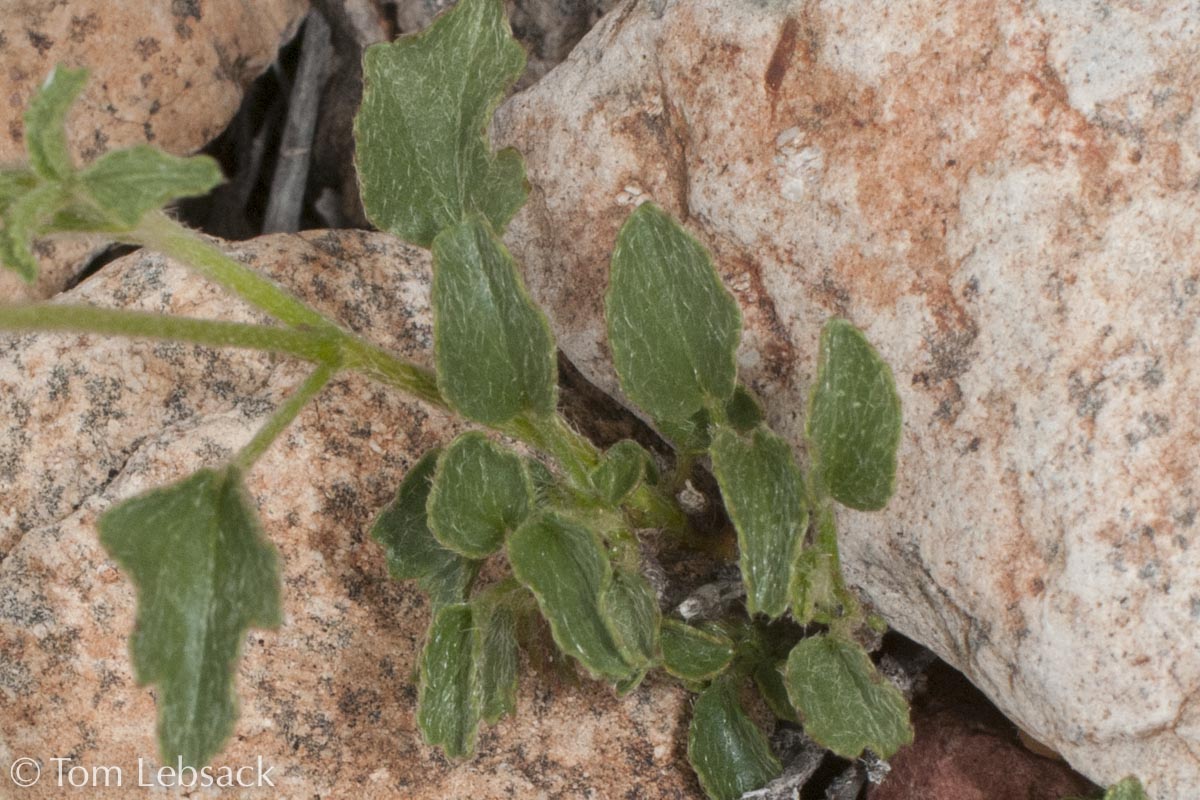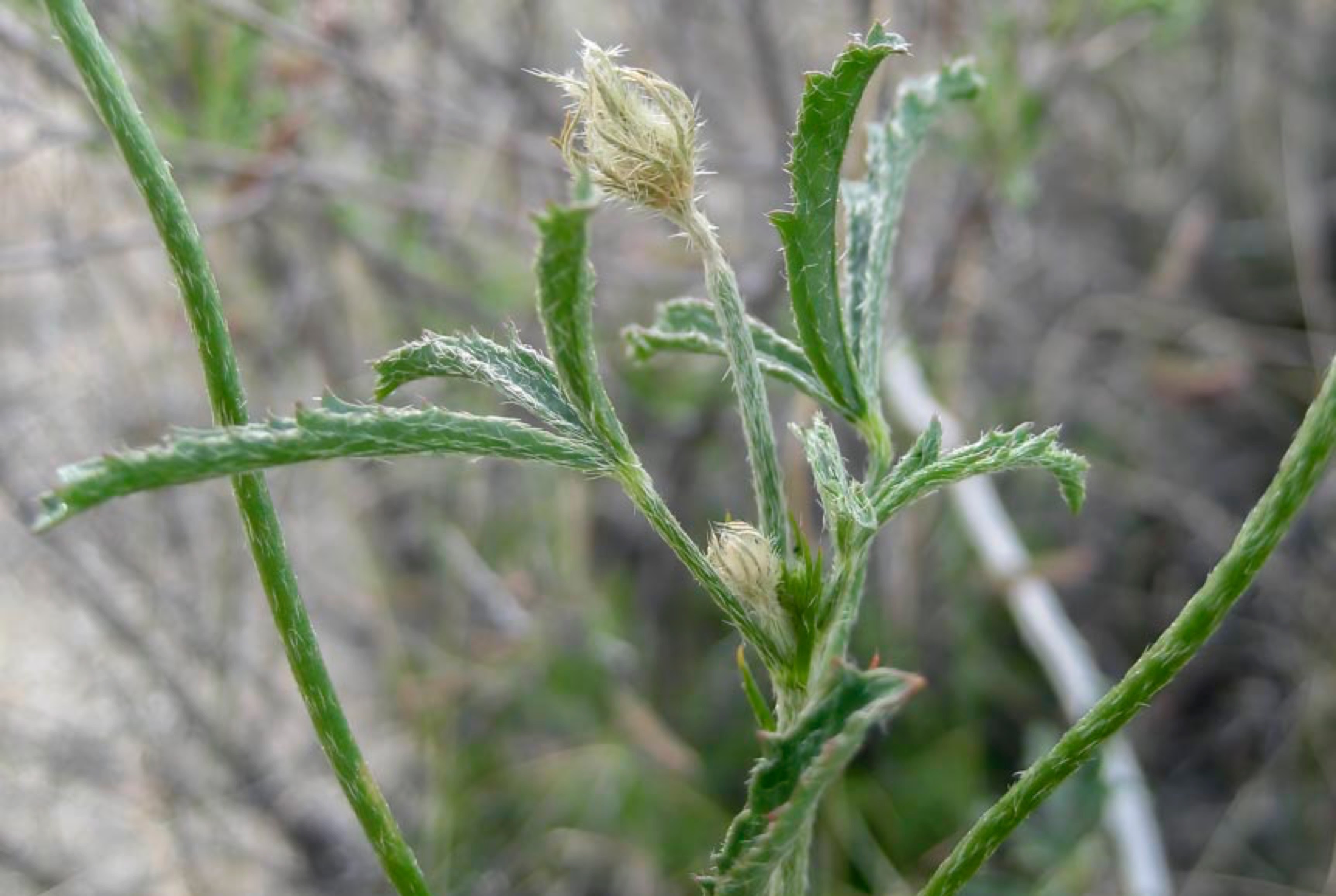Texas Wildbuds
Hibiscus coulteri
(Desert Rosemallow)
| Scientific Name | Hibiscus coulteri | USDA PLANTS Symbol | HICO |
| Common Name | Desert Rosemallow | ITIS Taxonomic Serial No. | 21626 |
| Family | Malvaceae (Mallow) | SEINet Reference |
Click Here |
| Description | Habitat: Desert environments; dry, open hillsides and canyons from 1,000 to 4,000 ft. Plant: Shrubby plant, less than 3 feet tall, rigid, woody stems; hairy foliage. Leaves: Toothed edges and surfaces covered with stiff hairs. Lower leaves broadly ovate to ovate-oval or cordate, may be somewhat lobed; upper leaves divided into 3 narrow, toothed lobes 5/8 to 1-1/4 inches long, covered with stiff hairs. Inflorescence: Creamy yellow flowers on pedicels; 5 petals, each about an inch long and may have purplish base; bracts are linear and fringed with hairs; prominent stamens grouped around pistil. Bloom Period: All year depending on rainfall. References: SEINet, Flora of North America and "Manual of the Vascular Plants of Texas" by Correll and Johnston. |
BONAP Distribution Map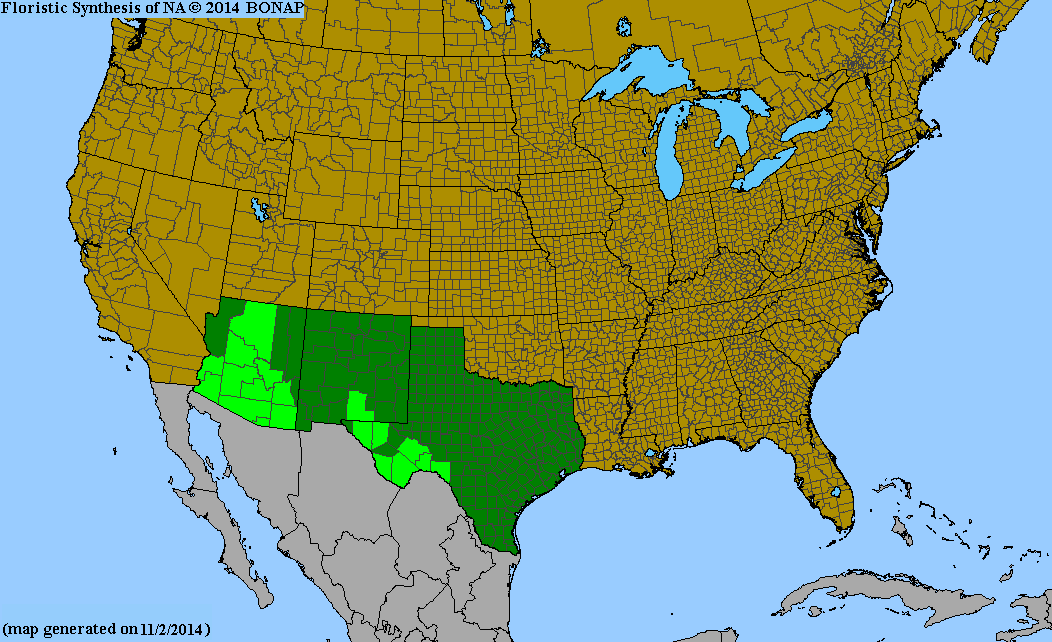 Map Color Key |
Texas Status: Native |
Banner photo of Castilleja indivisa and Lupinus ssp. taken along FM 1323 north of Johnson City, Blanco County
© Tom Lebsack 2025
Every attempt is made to provide accurate, up-to-date, and relevant information, but the completeness or accuracy of any information presented on this website cannot be guaranteed. I use authoritative references to insure high standards of accuracy and review and update the information frequently.
